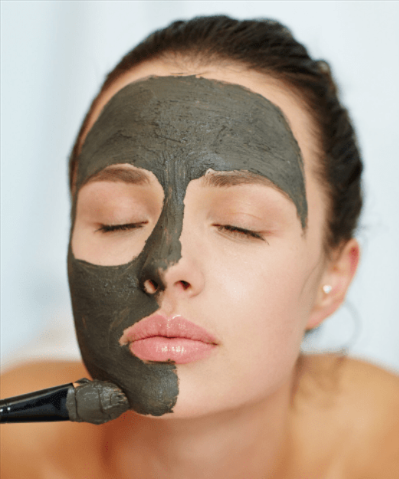Blending Eastern Wisdom with Modern Science for Holistic Health in Korea
In Korea, the path to wellness doesn’t stop at modern medicine—it’s often enhanced by the time-tested practices of traditional Korean medicine (TKM). What makes Korea’s approach truly unique is the way Korean doctors and nutrition experts seamlessly integrate traditional medical principles with evidence-based nutrition coaching to support the body’s healing and optimize long-term health.
This fusion—popular among both locals and international wellness seekers—offers a holistic path to managing weight, improving digestion, boosting energy, and even balancing hormones. If you’re curious about how Korea blends oriental medicine with K-style diet plans, here’s what you need to know.
What Is Traditional Korean Medicine (TKM)?
Traditional Korean Medicine (한의학) is rooted in centuries-old practices such as:
- Yin-Yang & Five Elements Theory (음양오행)
- Sasang Constitutional Typing (사상의학)
- Herbal medicine (한약)
- Acupuncture (침술)
- Moxibustion (뜸)
- Cupping therapy (부항)
But TKM isn’t just about needles and herbs—it also strongly emphasizes food as medicine, treating the gut, liver, and blood system with specific ingredients and seasonal eating patterns.
The Role of Nutrition in Traditional Korean Medicine
In TKM, food is categorized not only by nutrients, but by:
- Thermal nature (hot vs. cold)
- Taste and organ pairing (e.g., bitter for the heart, sour for the liver)
- Digestibility and energy flow (Qi)
Korean doctors often prescribe specific foods and herbs based on your unique constitution (체질), imbalances, and lifestyle.
For example:
- Cold hands & feet? Add warming foods like ginger, cinnamon, and fermented soybean paste.
- Liver stagnation from stress? Include sour foods like plum extract or kimchi.
- Weak digestion? Opt for easy-to-digest rice porridges and warm soups.
How Korean Doctors Integrate TKM into Nutrition Coaching
✅ 1. Sasang Typing-Based Meal Plans
Korean doctors often identify your Sasang type—Taeyang, Tae-eum, Soyang, or Soeum—before creating a nutrition plan.
Each type has unique metabolic tendencies:
| Sasang Type | Common Traits | Recommended Foods |
|---|---|---|
| Tae-eum | Slow metabolism, gains weight easily | Bitter greens, seaweed, radish soup |
| Soeum | Sensitive digestion, gets cold easily | Warm soups, ginseng chicken, rice porridge |
| Soyang | High energy, prone to heat | Cooling foods like mung beans, cucumbers |
| Taeyang | Rare, fiery constitution | Herbal tonics, fruit-based cleansing |
Meal plans are adjusted accordingly to enhance balance and reduce symptoms like bloating, fatigue, or irritability.
✅ 2. Herbal Integrations with Meals
Many clinics provide herbal supplements that can be taken with or after meals. Commonly recommended herbs include:
- Ginger (생강) for warming the stomach and aiding digestion
- Licorice root (감초) for soothing the gut and supporting immunity
- Astragalus (황기) to boost energy and blood circulation
- Schisandra berry (오미자) for liver health and hormone regulation
Some nutritionists even work with TKM doctors to infuse herbal broths into meal plans—ideal for seasonal cleansing or immune support.
✅ 3. Acupuncture + Diet Pairing
Korean doctors often pair acupuncture sessions with diet coaching for:
- Appetite suppression
- Digestive stimulation
- Hormonal balancing
- Stress management (which affects eating patterns)
For example, someone undergoing acupuncture for bloating may also be advised to consume fermented foods, drink barley tea, and avoid raw vegetables for a few weeks.
✅ 4. Seasonal Nutrition Guidance
In TKM, seasonal transitions affect organ systems—especially digestion, immunity, and circulation. Korean doctors create seasonal diet recommendations such as:
- Spring: Liver cleansing foods like sprouts, strawberries, leafy greens
- Summer: Cooling meals like cold noodle soups, watermelon, mung bean pancakes
- Autumn: Lung-protective foods like white mushrooms, Asian pears, ginseng
- Winter: Kidney-supporting stews, black beans, sesame oil, and bone broth
Nutrition coaches build meal plans aligned with these seasonal rhythms to support Qi (energy) flow and prevent imbalance.
Case Study: A Real-World Integration Example
Client: Foreign professional in Seoul experiencing fatigue, weight gain, and bloating.
Assessment:
- Sasang Type: Soeum (sensitive, cold constitution)
- Tongue and pulse diagnosis confirm weak spleen Qi
- Modern analysis shows sluggish metabolism and poor gut microbiota
Treatment Plan:
- Acupuncture + moxibustion weekly
- Warm Korean porridge (juk) with fermented side dishes
- Herbal blend including ginger, jujube, and cinnamon
- Daily movement and stress-reducing breathing exercises
- Weekly check-ins with a bilingual nutritionist
Results after 4 weeks:
- 3 kg lost
- Improved energy
- Fewer digestive symptoms
- Better sleep
Where to Find Integrated Nutrition + Traditional Medicine in Korea
Here are some top centers offering these combined services:
🏥 Chaum Life Center (Cheongdam-dong)
A luxury integrative wellness facility with bilingual staff, combining medical checkups, herbal prescriptions, and nutrition plans.
🏥 Jaseng Hospital of Korean Medicine
Known for pain treatment and metabolic health, Jaseng offers food therapy with Sasang-type diet counseling.
🏥 Kwangdong Oriental Medicine Clinic (Gangnam)
Specializes in acupuncture, herbal detox, and custom K-Style meal planning for digestion and hormonal health.
🏥 Kyung Hee University Hospital (TKM Wing)
Academic-level care with research-backed TKM + clinical nutrition programs.
Final Thoughts
Korean doctors are pioneering a holistic path to wellness by blending traditional Korean medicine with science-based nutrition coaching. Whether you’re managing chronic fatigue, digestion issues, hormonal imbalances, or just looking to lose weight, this integrated approach treats the whole person—not just symptoms.
Through food, herbs, acupuncture, and ancient principles tailored to modern bodies, Korea offers a truly one-of-a-kind wellness experience that’s attracting patients from all over the world.




